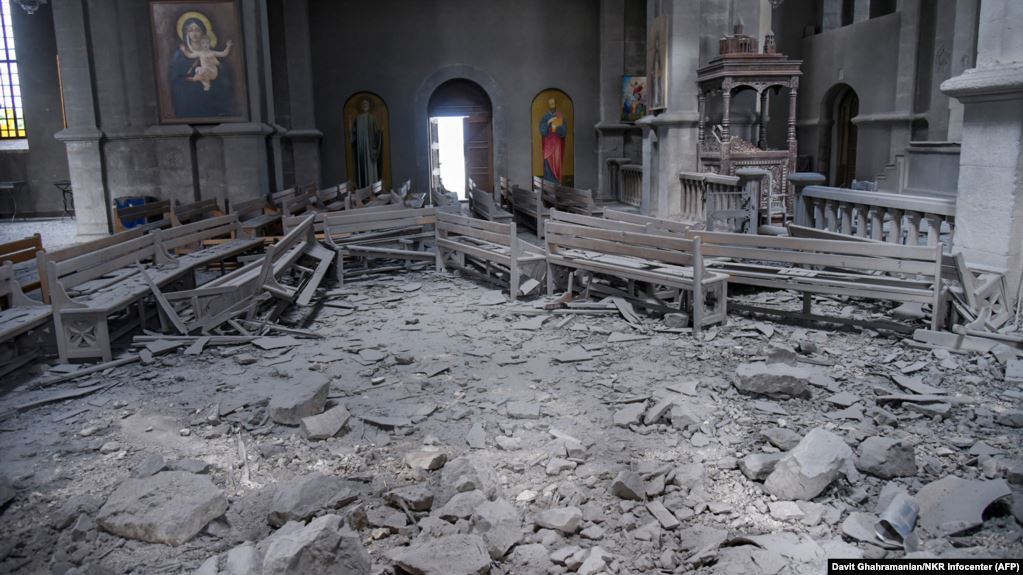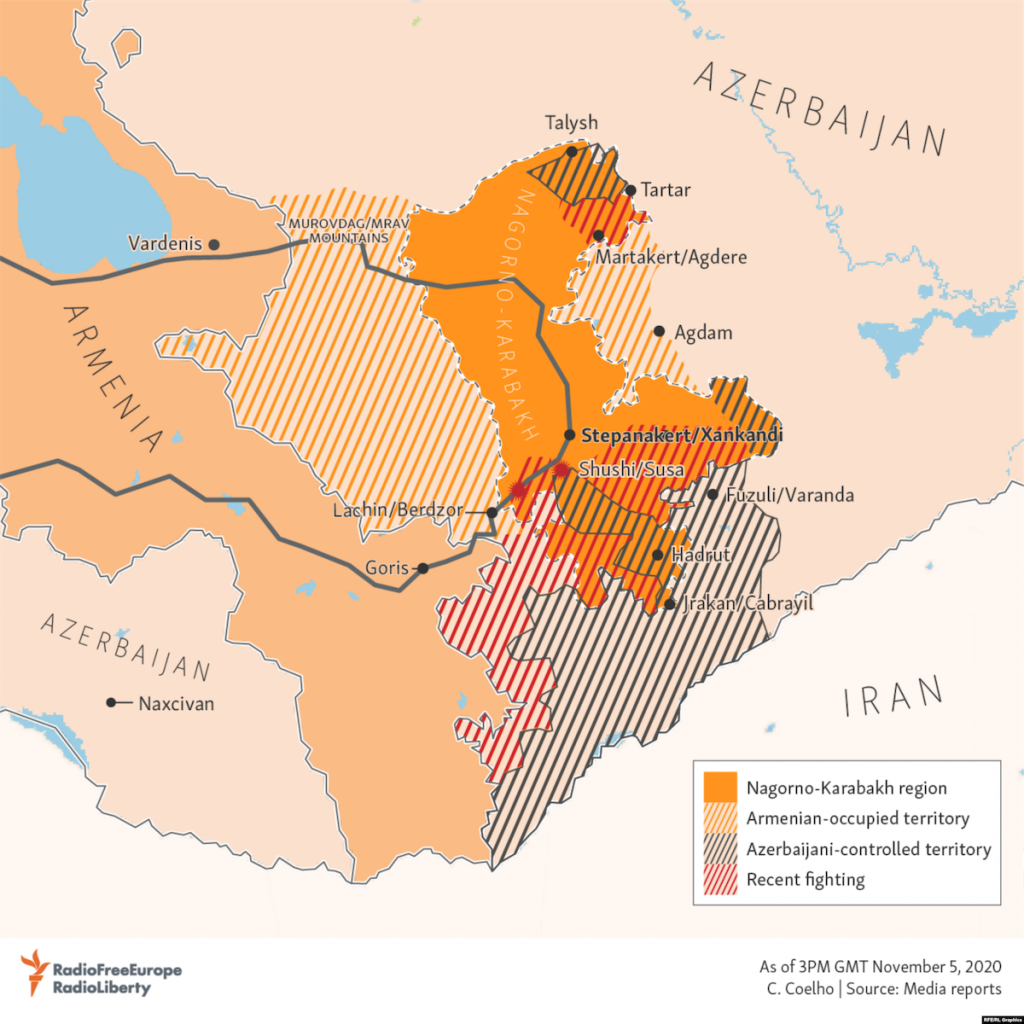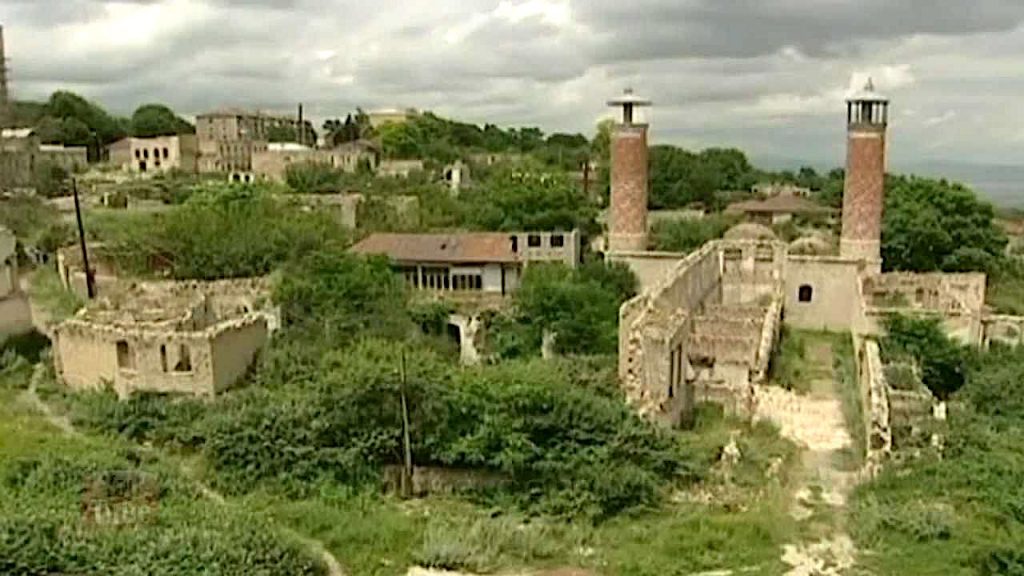Karabakh: Azerbaijani army nears ‘fortress city’ Shushi/Shusha
A month and a half after fighting broke out in the Karabakh conflict zone, battles are already likely underway in the immediate vicinity of the city of Shushi/Shusha [ed. the Armenian and Azerbaijani versions of the name respectively].
The city is often referred to as a fortress because it is located on top of a mountain and therefore difficult to capture.
From there, however, it would be easy to monitor and shell both the capital of Karabakh, Stepanakert / Khankendi [ed. the Armenian and Azerbaijani versions of the city respectively], and all the surrounding villages.

During the war in May 1992, when Karabakh and seven surrounding regions of Azerbaijan came under the control of the Armenian forces, the seizure of Shushi by Armenian troops became decisive for the further victory in the war.
The military reports that have been reported by the Azerbaijani and Armenian sides in the last two or three days show that battles are being waged for control of the road near the village of Karintak / Dashalti at the foot of the rocky mountains not far from Shushi/Shusha.
It is reported that the Azerbaijani army is shelling the city and the defensive positions of the Armenian military around it with mortars.
The Armenian side reports that it has repelled attempts of penetration of Azerbaijani sabotage groups.
This road is known as the Lachin Corridor and since the first Karabakh war in the early 1990s it has been called the ‘road of life’ for Karabakh.
If the Azerbaijani forces manage to block the road and move into the mountains, the main route to Karabakh from Armenia will be cut.
The route leads from the city of Goris in the south of Armenia directly to the entrance to Shushi / Shusha from the southwest.
The only other road to Shushi / Shusha goes from the north to the capital Stepanakert / Khankendi.
For the Armenian military, who are now defending Karabakh, in the event of the loss of the Lachin corridor, there will be only one ground communication with Armenia – the northern route through the Murovdag mountains

Results of one and a half months of fighting
When the ceasefire was signed in 1994, a line of separation of the parties was established, which left under the control of the Armenian forces not only the former Nagorno-Karabakh Autonomous Region of Azerbaijan, but also the seven adjacent regions.
In the first 40 days since the beginning of the fighting on September 27, the Azerbaijani army has significantly advanced beyond that line of separation.
Overall, the Azerbaijani side now controls, apparently, more than a quarter of the territory of five of these regions – along the southern border with Iran to the western border of Azerbaijan with Armenia.
History of the battle of Shusha in 1992
Azerbaijani and Armenian experts still disagree on how the Armenian side conquered the fortified city on May 9, 1992.

Armenian and Azerbaijani veterans talk about those events in the unique joint Armenian-Azerbaijani documentary ‘Parts of a Circle’, which the two groups filmed for several years with the support of the British organization Conciliation Resources.
The film was released online in the spring of 2020 and can be viewed here.
Azerbaijani veterans of the battle for Shusha say that on the evening of May 8, 1992, their commanders ordered them to retreat in order to regroup, return with reinforcements and return the city.
Armenian veterans of that battle say that gaining control of the city was ‘a matter of life and death’ for them, as Azerbaijani artillery from above easily destroyed their positions in Stepanakert / Khankendi.
One of the Armenian commanders, Arkadi Karapetyan, tells in the film ‘Parts of a Circle’ that they stopped the assault on the city even before sunset, because they ran out of ammunition.
But on the same night, the Azerbaijani military left the city.
“We watched them leave – and at 9 am [May 9] we took Shushi without a fight,” Karapetyan said.
The Azerbaijani service RFL / RL published a comment of one of those soldiers who had been in Shusha until the last moment. Mustafa Hajibeyli says that “the Azerbaijani military have learned that lesson and will not repeat those mistakes.”
“First of all, the Azerbaijani army now controls the zone with the help of drones and aircraft. Second, it uses tactics that make the enemy surrender cities without major clashes. This happened in Fizuli and Jabrayil,” Hajibeyli said.


















